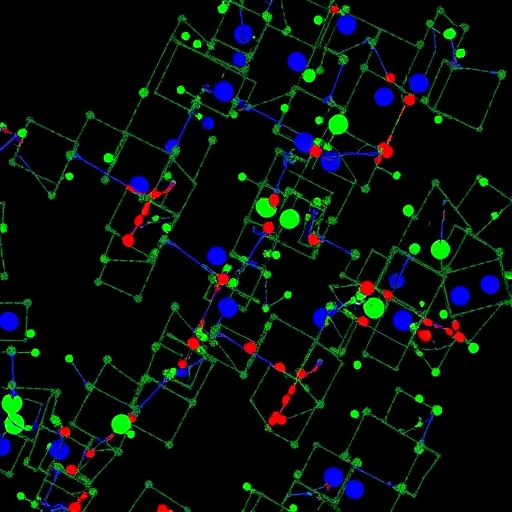In a groundbreaking study published in the journal Annals of Biomedical Engineering, researchers from leading institutions have unveiled a detailed patient-specific patch-planning workflow designed to address the complex challenges of congenital cardiovascular reconstruction. This innovative approach represents a major leap forward in surgical planning and personalization, ultimately aiming to enhance outcomes in patients with congenital heart defects.
Congenital heart defects are some of the most prevalent forms of birth abnormalities, affecting millions of individuals worldwide. These conditions often necessitate intricate surgical interventions that demand a high level of precision and foresight. The research team led by Kizilski, S.B., recognized the urgent need for a system that could improve the preoperative planning phase, wherein surgeons must assess anatomical and physiological anomalies unique to each patient. Traditional methods, reliant on generalized treatment paradigms, often fall short of providing the tailored solutions necessary for optimal patient care.
To tackle these challenges, the team developed a comprehensive workflow that integrates advanced imaging techniques and computational modeling to create detailed three-dimensional representations of each patient’s cardiovascular system. Such a methodology allows for personalized simulations that can predict surgical outcomes with greater accuracy. By harnessing the power of high-resolution imaging and sophisticated modeling software, surgeons can explore various surgical strategies in a virtual environment before stepping into the operating room.
This patient-centric approach is not merely theoretical. It has undergone rigorous preclinical validation, demonstrating its practicality and reliability. In the research, the scientists meticulously replicated various congenital heart defects in a laboratory setting, utilizing both animal models and extensive computational simulations. Each model was tailored to reflect the physiological conditions of a specific patient, thus ensuring that the data generated would be directly applicable to surgical practices.
In addition to the technical aspects, the research underscores the importance of collaboration across disciplines. The project brought together cardiologists, biomedical engineers, and computer scientists, each contributing their expertise to refine the patch-planning process. This interdisciplinary synergy not only enhanced the workflow but also facilitated the sharing of critical insights that might otherwise be overlooked in a more fragmented research environment.
Rich in data, the preclinical outcomes validated the effectiveness of this approach. The researchers confirmed that the use of patient-specific models allowed for more accurate predictions of blood flow dynamics and hemodynamics, crucial parameters that directly influence surgical success. By establishing benchmarks that compare these new methodologies to traditional practices, the team has set the stage for future clinical trials aimed at validating the efficacy of their techniques in real-world settings.
The implications of this research extend beyond immediate surgical outcomes. By improving preoperative planning, the team anticipates a reduction in operative times and hospital stays, leading to a decreased risk of postoperative complications. Furthermore, there’s potential for long-term benefits, as enhanced surgical strategies could lower the incidence of reoperations, thereby improving overall quality of life for patients.
As healthcare continues to embrace the principles of precision medicine, studies like this illuminate the path forward. The transition from one-size-fits-all surgical strategies to individualized plans represents a paradigm shift that could redefine how congenital heart defects are treated. In this context, the research presents a model that could be applied to other fields within medicine, potentially transforming numerous surgical procedures and patient-care protocols.
Moreover, the patch-planning workflow incorporates a feedback loop that allows surgeons to refine and iterate their approach as they gather more data from ongoing surgeries. This feature could significantly enhance the learning curve for new surgeons and facilitate continuous professional development through evidence-based practices. Such adaptability not only improves individual skill sets but also contributes to a culture of collective learning within surgical teams.
While the findings are promising, the next steps involve translating this knowledge into clinical practice. Researchers highlight the necessity for further trials to test the technology in diverse patient populations and various congenital conditions. Addressing variations in anatomical presentations and physiological responses is critical to ensure that this innovative technique can be universally applied.
Looking ahead, the team is optimistic about the future of patient-specific treatments in congenital cardiology. The ability to create tailored surgical plans represents a noteworthy evolution in cardiac care that stands to benefit not only patients but also healthcare systems by optimizing surgical resource allocation and improving patient outcomes.
This work also raises fascinating questions about the future trajectory of surgical technology. As computational power and imaging techniques continue to advance, the prospects for fully integrating artificial intelligence and machine learning into surgical planning seem increasingly attainable. Such advancements could further refine the patient-specific patch-planning workflow, making it even more robust and reliable.
In summary, the research team’s preclinical validation of a patient-specific patch-planning workflow for congenital cardiovascular reconstruction stands as a significant contribution to the field of biomedical engineering and surgical practice. By reimagining how surgical planning is approached, this innovative methodology promises to pave the way for safer, more effective surgical interventions in the realm of congenital heart disease.
In an era where healthcare is rapidly evolving, studies emphasizing individualized approaches will undoubtedly shape the landscape of cardiovascular surgery. The commitment to combining advanced technology, patient-centric frameworks, and interdisciplinary collaboration is a paradigm that is essential for overcoming the multifaceted challenges of congenital cardiovascular reconstruction.
As the scientific community eagerly anticipates the results of future clinical trials, the excitement surrounding these innovations suggests that we may soon witness a revolution in how congenital heart defects are addressed, transforming the lives of countless individuals and their families.
Subject of Research: Congenital Cardiovascular Reconstruction
Article Title: Preclinical Validation of a Patient-Specific Patch-Planning Workflow for Congenital Cardiovascular Reconstruction
Article References:
Kizilski, S.B., Recco, D.P., Davee, J.M. et al. Preclinical Validation of a Patient-Specific Patch-Planning Workflow for Congenital Cardiovascular Reconstruction.
Ann Biomed Eng (2025). https://doi.org/10.1007/s10439-025-03870-4
Image Credits: AI Generated
DOI:
Keywords: Patient-Specific, Patch-Planning, Congenital Cardiovascular Reconstruction, Preclinical Validation, Surgical Outcomes.
Tags: advanced imaging techniques in surgeryAnnals of Biomedical Engineering research findingscomputational modeling in healthcarecongenital cardiovascular reconstruction innovationscongenital heart defect treatmentimproving patient care in congenital heart diseasepatient-specific surgical planningpersonalized medicine in cardiologypreoperative planning for heart surgeryrevolutionary workflows in surgerysurgical outcomes predictionthree-dimensional cardiovascular modeling





